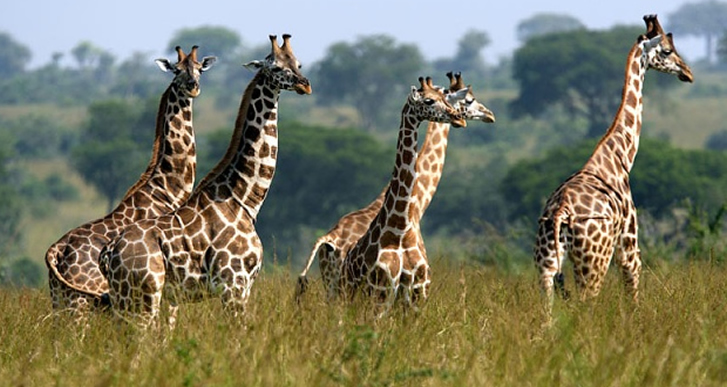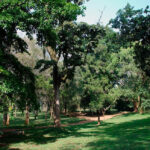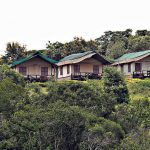 Queen Elizabeth National Park found in the southwestern Uganda in the districts of Bushenyi, Kasese, Rukungiri, Kamwenge and its over 376km from Kampala the capital of Uganda, the park is understandably the most visited popular destinations in Uganda.
Queen Elizabeth National Park found in the southwestern Uganda in the districts of Bushenyi, Kasese, Rukungiri, Kamwenge and its over 376km from Kampala the capital of Uganda, the park is understandably the most visited popular destinations in Uganda.
The diverse eco-systems, which incorporate shady, sprawling savanna, humid forest, fertile wetlands, and shimmering lakes, make Queen Elizabeth National Park the perfect home for great big game, 10 different primate species including chimpanzees in Kyambura Gorge and more than 600 bird species.
Set against the foothills of the mountains of the moon (Mountain Rwenzori), the park’s superb vistas incorporate many huge craters drastically into rolling green hills, all encompassing views of the Kazinga Channel with its shores lined with variety of wildlife like; hundreds of bird species, herds buffaloes, elephants and hippos, and the Ishasha sectors, whose fig trees shroud lions prepared to jump on crowds of unsuspecting kobs and antelopes.
And in addition to its exceptional wildlife attractions, the park also has an interesting cultural history.
There are numerous chances for tourists to meet the local people and enjoy dance, storytelling, music and many others.
The establishment and gazetting of the Queen Elizabeth National Park in 1954 has ensured the preservation of its eco-system, which thus benefits local communities around the national park.
The region at present occupied by the park was beforehand a grazing region for local Basongora pastoralists.
At the point the Henry Morton Stanley and Sir Frederick Lugard the British explores visited the area at the end last century, both reported the region to have been greatly depopulated due to cattle raiding from the (Banganda and Banyoro Kingdoms) and scourges of smallpox and rinderpest.
The Basongora social economy couldn’t recoup from these problems and except for leftover villages around the two lakes, the area was totally depopulated. And those who remained were compelled to turn into fishing.
These problems allowed the wildlife in the area to increase and vegetation to change altogether, and played a vital part in deciding the establishment of this park by the Protectorate organization.
In 1906, Lake George north area was declared a wildlife game reserve, so that they can reduce what some administrators said to be uncontrolled hunting of wild animals by Europeans and Africans and the growing pressure for the development of wheat and cotton production in the area.
By 1912, the entire area of the Lake George Game Reserve (area around Lake George and Ishasha Sector) were pronounced gazette area, agrarian and fishing community moved out to other non-affected regions and the Lake George Game Reserve was to a greatly abandoned this created a chance for wildlife recovery in park.
Further the outbreaks of sleeping sickness proceeded up until the mid 1930s.
The park Ordinance was passed on 31st March 1952 and Queen Elizabeth National Park then, Kazinga National Park was legitimately gazetted soon thereafter, taking after serious campaigning by the Chief Game Warden of that time, Bruce Kinloch, and the Governor.
Subsequently, the area protected inside the Lake George Game Reserve region was extended extensively to incorporate the large area toward the east of Lake Edward and Kazinga Channel.


